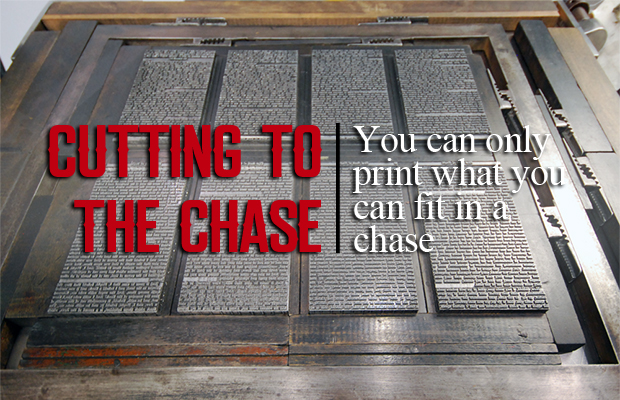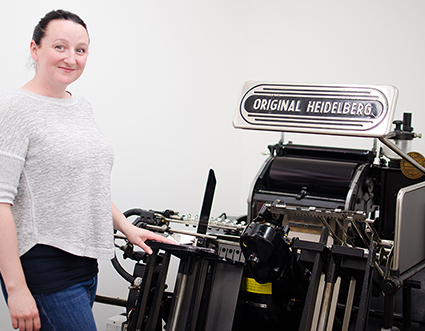
|
|
| Home › Articles › Here |
|

|
|||||||
| By: Nick Howard | Date: July 2018 | Contact the Author | ||||||||
|
Tactile – representing exciting new processes brought by early pioneers Scodix and Konica-Minolta/MGI, showcase how we have moved from “essential print” to eye-catching attention- drawing communication. As more of this digital technology enters shop floors one thing is clear; the hardware is pricey. Whether with thick specialized varnishes - that pop off the page, or hot and cold foils that mimic more traditional techniques, eye candy effects dazzle without the skills needed with relief printing (letterpress). Printers can now do more exciting projects in-house. But can they afford it and can they sell enough of these new effects? We all get how our traditional Print business has changed, just in the last 15 years and a good portion have made strong efforts to be part of the next digital wave. The winners have figured out why their clients will pay twice as much for a coffee. Sadly though, industry news is often dismal. It seems almost daily, word spreads of another shuttered plant or a reduction in print periodicals. The once standard and dependable “forms & stationary” sector has been essentially wiped out by on-line paper-less solutions. Just last week our HVAC tech was on-site for a service call. When completed the tech handed the office manager a tablet and asked for a signature. He wasn’t even out of our parking lot when into our in-box whizzed an email invoice. Anyone successful today already bade farewell to all the loser segments. But, there is a new group - for the first time in a long time - entering our industry. On a recent weekday afternoon, we had a visitor, all excited and full of enthusiasm. With husband in tow, Sibylle was here to learn how to run her new Heidelberg Platen. Wow, is Sibylle passionate about print! Out of the family’s small re-worked garage just a few years ago, Sibylle started off with a 10 x 15-inch hand-fed platen. Soon her creativity in designing and printing all types of stationary forced her to look for a better and faster press than the old Chandler & Price. Busier than ever and with more demanding designs, requiring multiple press passes, getting an automatic letterpress was a necessity. I’ve never seen anyone learn the Heidelberg as fast as Sibylle. After two hours of instruction, she was off to the races. Why? Sibylle and all the letterpress lovers that come to our museum simply fell in love with the process and wanted to learn. It may also help that they, just like Sibylle, most are university educated, have worked in completely disparate industries and are drawn – like a magnet – to the enjoyment of letterpress`s version 2018.
Similar things happened with a couple in Miami who flew up to buy their windmill, a young lady in western Canada who had her heart set on a hand-fed platen, the card shop owner in Moscow who simply had to have a Gordon. Then there is the truffle maker who insisted on doing his own label die-cutting and the boutique chocolatier who wanted to print and die-cut his boxes. Maybe the most enthusiastic was the gentleman who drove right across the country to load up an R.HOE hand iron press. Letterpress isn’t just localized either. Besides Russia, we’ve sold presses and Columbians to Universities and museums in Boston, Ann Arbor, and New Zealand. A refurbished Heidelberg even went as far as Australia. These are just a few of the growing and thriving folks entering the world of printing and loving it. When we have visitors at the museum, they often get very excited about the array of type and machines. Women especially bring a zeitgeist into the space that our industry hasn’t seen for a very long time. Unlike men, women generally don’t get caught up in male-dominated discussions. They see no compulsion to know why a machine does this or that or even waste time listening to long-winded stories of masculine adventures with machinery. “What does this thingy do?” is a typical female question I get, and I smile broadly realizing that this male-dominated industry needs more ladies like Sibylle who break all the taboos. As depressing as world news can be, folks living in developed countries are generally doing better than ever. They seem to have more personal time and more money to enjoy things they really want to do. Print, as well as other forms of ink on substrate communication, is still a creative process. Someone wants to manipulate type and images to make a bespoke article that besides being exclusive is also made by hand. Take a look at fashion. Virtually all of it comes from mass production using machinery. But high fashion Couture clothing is hand-made. Wristwatches were almost essential just a few years ago. Not anymore. Watchmaking grew from a craft to a commodity as the industry rushed to make them cheaper. Liquid crystal Casio watches were just functional, cheap and everywhere. Today owning an expensive bench-built Patek Philippe is a lifestyle choice and certainly not a necessity. Sales of expensive watches continue unabated. The same is true for cars and expensive furniture. Not everyone wants to live in a mass produced world. Monster offset sheetfed sales are shrinking because they are very good at only one thing - analog mass production. Unless this exists (packaging, labels, etc.) the graph chart looks like the back-side of a letter “M.” But as I can clearly see, now is the cool re-birth of print. Only this time from a long ago technology that was made redundant by the offset press – Letterpress. For less than $15,000 you could easily equip a small little shop. Even if as most do, farm out their photopolymer printing plates, all you need is paper stock, ink, a manual platen press, small guillotine and a thirst to be the operator. No one even needs to use the original lead type anymore as photopolymer plates are excellent and eliminate all that “locking up the form” challenges. If you succeed in doing reasonable quality, then get a Shopify or Etsy platform and start taking in orders. The small cottage industry letterpress shops can market their products the same way large printers do by simply using the internet. The distribution chain is mature and low cost. Each small artist/printer can reach anyone with a smartphone. The ability to showcase your designs and abilities, take orders and receive payments is a major ingredient for success. What we call “Letterpress Printing” today would have got you fired back in the 1950’s. The heavy embossing into paper is what clients look for in specialized business and greeting cards. I quit telling our new friends why they aren’t respecting the original craft as they simply don’t care to know. Here’s to Sibylle and all the exuberant new generation of printers that have a real passion for the art of printing. All measured by the growing public that seeks to differentiate themselves when they too want to use print. Small perhaps by Sybille and her fellow artists are helping the rest of the industry promote itself. You have to really love what you do. |
||||||||
| Contact the Author | ||||||||
|
|||||||||||||||




